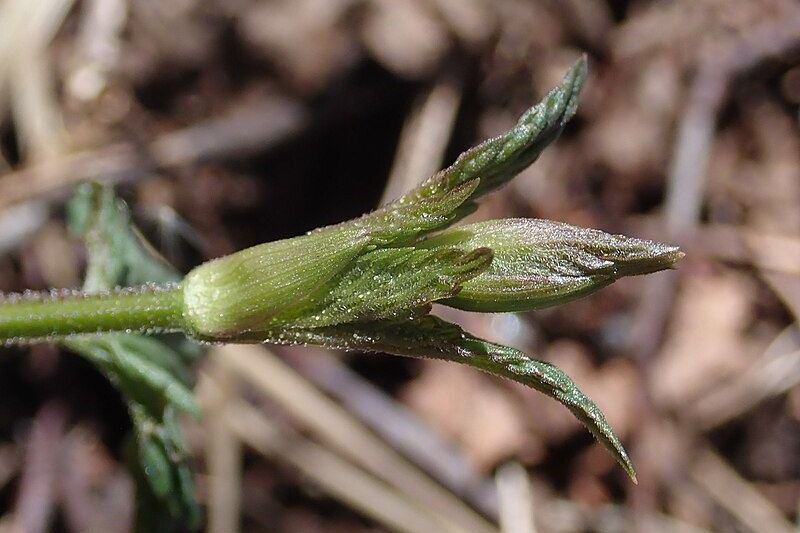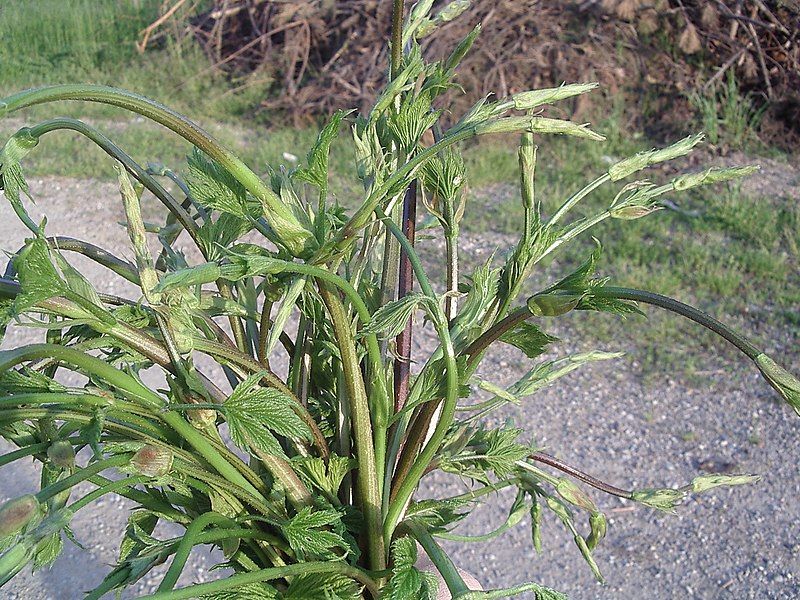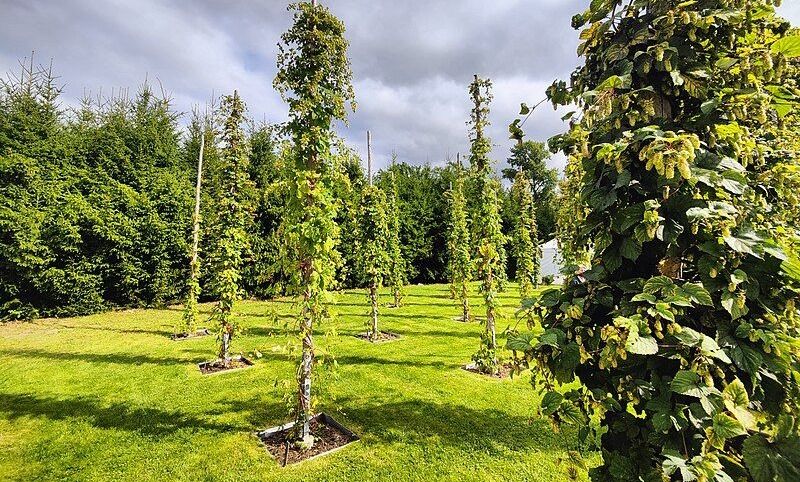Hop Shoots: The World’s Most Expensive Vegetable
Touted as the world's most expensive vegetable, hop shoots, those delicate sprouts from hop plants, fetch prices up to $1,000 per kg, reflecting their unique culinary allure.

Often, when we think of expensive foods, we envision caviar, premium steaks, and lobster. However, besides the famed truffles, there's an under-the-radar vegetable that also commands top dollar — hop shoots.
Hop shoots, tender sprouts from hop plants, are a culinary delicacy and the world's priciest edible greens, commanding up to $1,000 per kilogram.
These tiny greens sprout in areas where the familiar hop cones, essential for beer-making, don't form. Their high price is due to various production hurdles.

What are Hop Shoots?
Hop shoots are the tender spring sprouts of the hop plant (Humulus lupulus). Particularly treasured in Belgium, where they're called "hopscheuten", these edible greens are a seasonal delicacy savored predominantly in early summer.
Their subtle bitter taste and asparagus-like crunch make them distinctive but with a unique, herbal flavor profile, they can be steamed, sautéed, or used in salads..
The hop plant, a perennial vine thriving for up to two decades, and can reach an average height of around 6 meters at a moderate growth pace.
The Storied Journey of Belgium's Hop Shoots
The hop plant, native to the temperate zones of Europe, Asia, and North America, boasts ancient origins. However, its tender offshoots, the hop shoots, have a more contemporary culinary narrative.
Initially consumed by Belgium's less privileged, these delicacies, locally termed "hopscheuten," soon found their way to the elite dining tables by the 19th century. Today, they're emblematic of Belgian gourmet traditions.
Originating in West Flanders, particularly in towns like Poperinge, Ieper, and Vleteren, these crunchy, white shoots with a pronounced peppery and nutty flavor contribute significantly to Belgium's hop yield.
While Poperinge was historically one of several cultivation hubs, it has emerged as today's leading producer. This prominence was solidified in 2013 when Poperinge, along with Ieper and Vleteren, earned PGI recognition.
The region's pride in this delicacy culminates annually with the Hopscheuten Happening festival.
Interestingly, while hop plants are abundant in Poperinge, only a select few farmers choose to harvest these labor-intensive shoots.
Despite the hop plants' ability to mature fully post-harvest and a demand that far outweighs supply, the challenges deter many. Without concerted efforts to uphold this tradition, Belgium's prized culinary heritage stands at risk.
What Is The Price of Hops Shoots?
In Belgium and Holland, hop shoots, resembling slender mint strands, can cost up to $1,000 per kilogram. Though they don't contribute to beer production, their steep price tags make them the world's most expensive, yet unassuming, vegetable delicacy.

Why Are Hop Shoots So Expensive?
Several factors contribute to the high price tag of hop shoots:
Poperinge's Ideal Hop Plants Terrain
Poperinge, with its unique Ldcz-type sandy loam soil, provides perfect drainage for 'Poperingse hopscheuten' cultivation.
The rich, lime-enhanced soil retains moisture from its deep layers, optimizing hop growth.
Benefiting from a temperate maritime climate due to its proximity to the sea, Poperinge enjoys dry winters, humid summers, and an average rainfall of 825 mm annually.
This climate, combined with generations of farming expertise, makes the region a prime spot for these cherished hop shoots.
Harvesting Challenges and Sprout Picking
These shoots grow rapidly, but only the top few centimeters are edible. Despite large plantations, the actual yield of these edible shoots is minimal.
They grow sporadically, requiring careful searching and bending to pick. Given their small size, hundreds are needed to fill a bag.
A farmer meticulously trims the hop shoots, keeping only the crispest sections with a simple knife. These fresh sprouts then make their way to local eateries daily.
Yield and Seasonality
Considering the labor-intensive nature of the process, supplying 3 kilos in a week per farm is commendable.
Traditionally, hop shoots had a short three-week harvest window from late March to mid-April.
Since the 1980s, innovations using greenhouses and soil heating have extended their availability from late December. However, many are still hand-harvested from open fields, a labor-intensive method, ensuring supply through April.
Delicate Nature
Hop shoots are highly perishable. Ensuring they reach markets or restaurants in prime condition means they must be transported rapidly after harvest.
Medicinal and Therapeutic Uses
Beyond their culinary application, hop shoots have potential health benefits. Some studies suggest they can produce antibodies against tuberculosis.
Their components, like xanthohumol, have shown anticancer activity, blocking leukemia cells and potentially targeting other cancer types.
Moreover, the hop plant has traditionally been used to treat conditions ranging from anxiety and insomnia to ADHD and irritability.
Furthermore, hop shoots are prized in European countries for their skin-protecting antioxidants, ideal for colder climates.
Understanding Hop Plants: Hop Shoots vs Cones
Spring Emergence: At the onset of spring, the hop plant starts its growth from the crown, producing its initial tender stems known as hop shoots. Harvested in certain regions for their delicacy, this phase is brief, spanning only a few weeks.
Bine Growth: Post the hop shoot phase or if left untouched, the plant focuses on producing long climbing stems or bines. These bines are trained onto trellises to optimize sunlight capture, setting the stage for the cone production phase.
Cone Production: By late summer, the bines start producing the familiar hop cones. These are crucial for beer production and are the primary reason for large-scale hop cultivation.
Dormancy: With the onset of cooler temperatures in autumn, the hop plant retreats into dormancy, preserving energy in its roots for the next spring's growth.
The hop plant journey starts with the delicate shoots in spring, transitioning to the production of essential hop cones by late summer.
Flavor profile And Culinary Adventure
Hop shoots, often likened to "hop asparagus" for their comparable taste, are a rare culinary delight primarily savored in upscale Belgian eateries.
Many, even within Belgium, are unaware of this unique vegetable. While they have a raw bitterness reminiscent of potent kale with hoppy undertones, their flavor transforms when cooked.
Whether tossed in salads, sautéed in butter or olive oil, grilled with crusty bread, or pickled, they evolve from their initial bitterness to an earthy-nutty sensation, showcasing their versatile culinary potential.
In conclusion
Hop shoots are a culinary gem that embodies the spirit of spring with their nuanced taste.
Their storied past, combined with the laborious process of harvesting and their fleeting availability, elevates them to a luxury in the gastronomic realm.
If you ever find yourself in Belgium, it's a delicacy you should undoubtedly experience.


